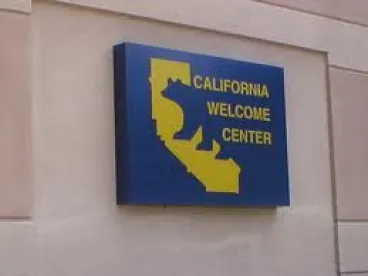On Thursday, March 18, the California Legislature passed Senate Bill 95 (“SB 95”) which will provide statewide supplemental paid COVID-19 sick leave, retroactively to January 1, 2021. Governor Newsom signed SB 95 on Friday, March 19. California’s previous supplemental paid COVID-19 sick leave (covered here) expired on December 31, 2020. Since then, California employers have been navigating various evolving local ordinances (covered here) in the absence of a statewide emergency paid sick leave law.
Like last year’s state law, SB 95 requires 80 hours of paid leave to employees for qualifying reasons, but this year’s version expands paid COVID-19 leave to a greater number of employers and for a wider variety of reasons. Notably, the leave must be granted in addition to leave taken under state, local, or employer leave laws or policies. The bill does not provide a tax credit or other funding measure to offset the cost of the leave, as did the Families First Coronavirus Response Act (FFCRA).
Additional Employers Covered
Under the old state law, private employers with 500 or more employees in the United States were covered. The new law applies to an employer “that employs more than 25 employees.” However, SB 95 does not specify whether those employees must be in California or nationwide for an employer to be subject to the new supplemental paid COVID-19 sick leave requirement.
Additional Reasons Covered
SB 95 broadens the circumstances under which an employer is required to provide leave. The expired state law required covered employers to provide eligible workers with supplemental COVID-19 leave when they were unable to work due to any of the following reasons: 1) the employee is subject to a federal, state, or local quarantine or isolation order related to COVID-19; 2) the employee is advised by a health care provider to self-quarantine or self-isolate due to concerns related to COVID-19; and/or 3) the employee is prohibited from working by the employer due to health concerns related to the potential transmission of COVID-19. The new law requires covered employers to provide supplemental paid COVID-19 sick leave to employees unable to work or telework due to any of the following reasons:
-
The employee is subject to a quarantine or isolation period related to COVID-19 as defined by an order or guidelines of the State Department of Public Health, the federal Centers for Disease Control and Prevention, or a local health officer who has jurisdiction over the workplace;
-
The employee has been advised by a health care provider to self-quarantine due to concerns related to COVID-19;
-
The employee is attending an appointment to receive a vaccine for protection against contracting COVID-19;
-
The employee is experiencing symptoms related to a COVID-19 vaccine that prevent the employee from being able to work or telework;
-
The employee is experiencing symptoms of COVID-19 and seeking a medical diagnosis;
-
The employee is caring for a family member who is subject to a quarantine or isolation order or guidelines, or who has been advised by a health care provider to self-quarantine; and/or
-
The employee is caring for a child whose school or place of care is closed or otherwise unavailable for reasons related to COVID-19 on the premises.
Retroactive Effect
The requirement to provide leave begins 10 days after the law is enacted and applies retroactively to January 1, 2021. Any retroactive payments need to be paid “on or before the payday for the next full pay period after the oral or written request of the covered employee.” The new law expires on September 30, 2021. In light of the retroactivity, California employers should begin preparing for leave and reimbursement requests and consult with employment counsel to ensure their COVID-19 leave policies are compliant with state and local laws.
Amount of Leave
Like the prior state law, the new law requires that employers provide eligible employees with up to 80 hours of supplemental paid COVID-19 sick leave. As in the previous state law, covered employees are entitled to the 80 hours of leave “if that employee either works full time or was scheduled to work, on average, at least 40 hours per week for the employer in the 2 weeks preceding the date the covered employee took COVID-19 supplemental paid sick leave.” Part-time employees with a normal weekly schedule are entitled to the total number of hours the covered employee is normally scheduled to work for the employer over 2 weeks. Part-time employees working a variable number of hours are entitled to 14 times the average number of hours they worked each day for the employer in the 6 months preceding the date the covered employee took supplemental paid COVID-19 sick leave, or over the entire period the covered employee has worked for the employer if the period is fewer than 6 months. Part-time employees working a variable number of hours for the employer over a period of 14 days or fewer are entitled to the total number of hours the covered employee has worked for that employer.
The new law tracks the FFCRA’s caps of $511 per day and $5,110 in the aggregate. If federal legislation increases these amounts, however, the new federal cap would apply. Within 7 days of the law’s enactment, the Labor Commissioner will publish a required notice to post or provide to employees electronically. Since SB 95 has become law, employers with 25 or more employees should update COVID-19-related leave policies, provide notice, and update their wage statements, as non-compliance comes with the potential for penalties.



 />i
/>i

